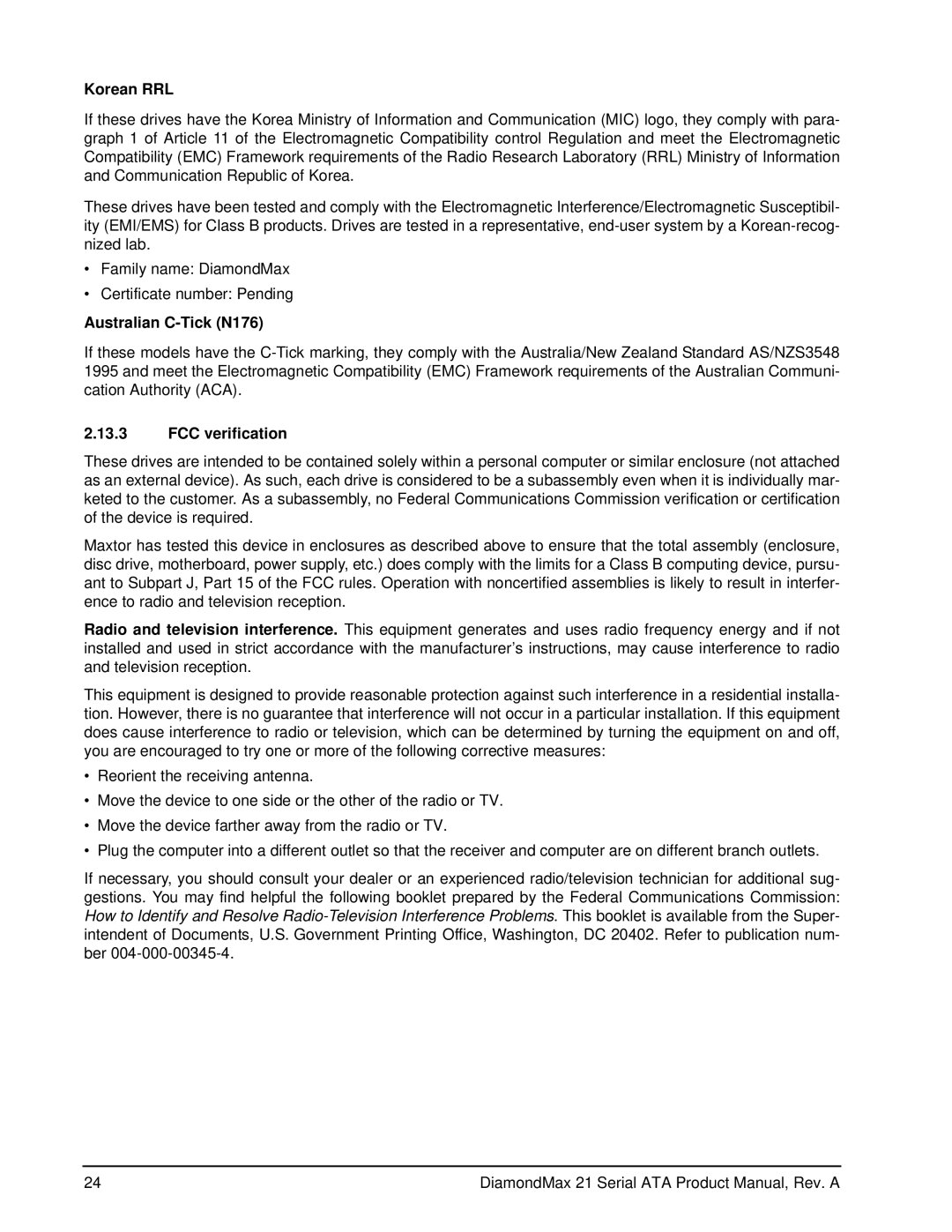100451230 specifications
The Maxtor 100451230 is a renowned hard drive that has carved a niche for itself in the realm of data storage solutions. Known for its reliability and performance, this hard drive has been widely utilized in various computing applications, ranging from personal desktops to enterprise-level servers.One of the main features of the Maxtor 100451230 is its impressive storage capacity, capable of holding vast amounts of data, making it suitable for users with significant storage needs. The drive typically offers a storage size of 500GB, which is more than sufficient for everyday applications such as document storage, multimedia files, and software applications. This capacity positions it well in the competition, appealing to home users and professionals alike.
The Maxtor 100451230 operates on the IDE (Integrated Drive Electronics) interface, commonly known as PATA (Parallel ATA), which was a prevalent interface in earlier computing systems. This technology ensures compatibility with a wide range of older systems, making it an ideal choice for upgrades or replacements in legacy hardware. The drive’s interface allows for data transfer rates sufficient to meet the needs of many everyday tasks, although it may not match the speeds of modern SATA drives.
Built with a rotational speed of 7200 RPM (Revolutions Per Minute), the Maxtor 100451230 strikes a balance between speed and performance. The faster spin rate enhances read and write speeds, allowing users to access their data quickly, which is particularly beneficial for applications that require frequent data retrieval. This feature also contributes to an overall improved performance in multitasking environments.
In addition to its technical specifications, the Maxtor 100451230 incorporates robust data protection features. With built-in support for advanced error correction and a reliable data recovery mechanism, this hard drive provides users with a level of assurance that their data remains intact even in the event of unexpected issues.
Furthermore, it boasts a relatively low power consumption profile, making it an efficient choice for users concerned about energy use. The drive operates quietly, an essential characteristic for users who prioritize a quiet computing environment.
In summary, the Maxtor 100451230 stands out with its blend of capacity, compatibility, speed, and reliability. While newer technologies like SSDs have emerged, the Maxtor 100451230 remains a viable option for those looking for a dependable and efficient hard disk drive for their data storage needs.
